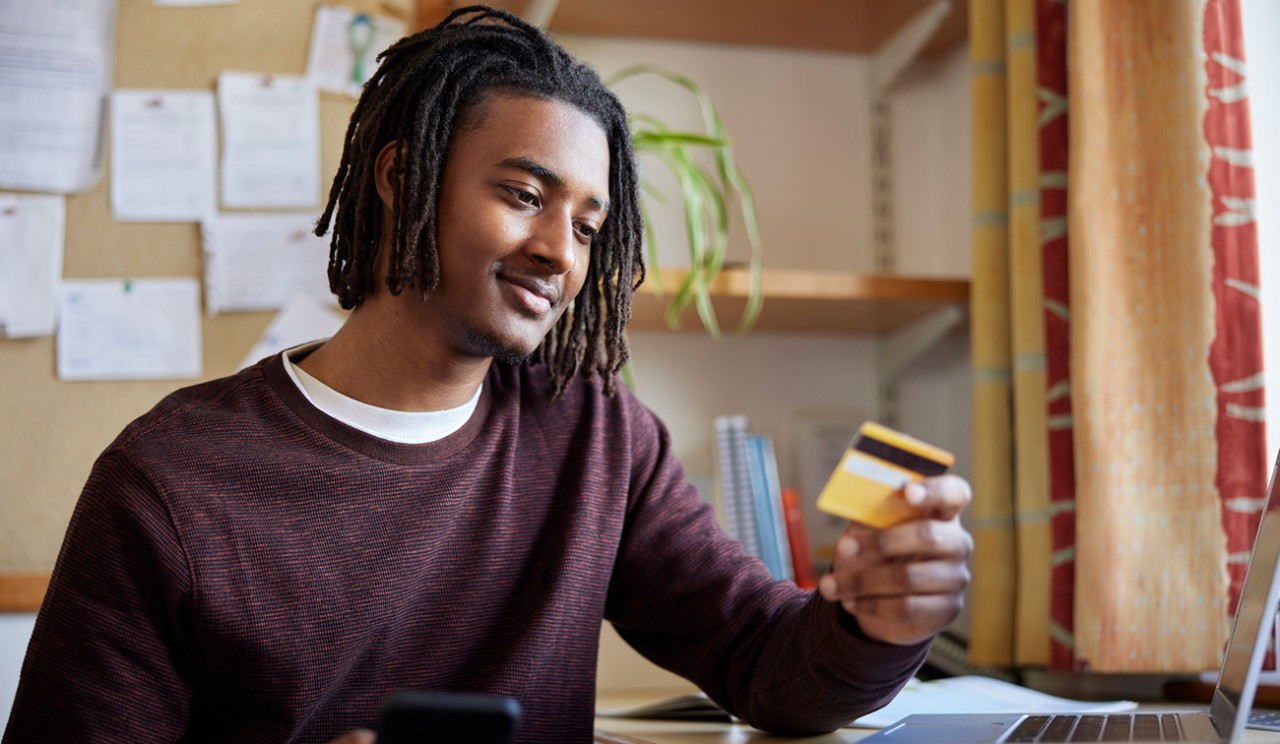Opening Your First Bank Account
Whether it’s an allowance you’ve saved from your parents or a paycheck from your first job, you might be considering where you want to keep your cash. If so, opening a checking or savings account might be the best option for you. But which is the right move, and what are some of the best ways to keep track of your account as it grows? Read on to learn more.
Checking or savings?
If you have decided to open your first account, you may be wondering whether you should open a checking or a savings account, and if there’s even a difference between the two.
The truth is that there are great benefits to both, and which one works best for you depends on your situation and your goals. A checking account is often used for transactions like purchases or bill payments. A savings account, as the name suggests, is primarily for saving and building money for longer-term goals. Checking accounts may or may not pay you interest like a savings account, but the money can be easily accessed at all times, while a savings account might have limits on the number of withdrawals you can make each month or quarter. Both have their value, and it is worth considering opening one of each for their specialized benefits.
Keep tabs on your balance
One of the most important tips to keep in mind with any checking or savings account is knowing exactly how much money you have in it. The last thing you want is to spend more than you have and risk incurring overdraft or non-sufficient funds fees.
With this in mind, learning how to balance your account can be an invaluable skill. Begin by writing down your deposits and then subtract transactions (purchases or withdrawals) you have made. Also deduct any fees you may have paid, like ATM fees or maintenance fees. The amount that remains is how much you have available to spend. Your account is considered “balanced” when the balance you calculate matches the balance the bank shows for your account. Record your transactions daily to stay on top of your balance.
To help with this, you should consider downloading your bank’s official mobile app, like the myTrustmark® app. Banking apps can track your account activity and automatically add and deduct transactions to and from your balance. While this doesn’t mean you should forgo balancing your account yourself to check for any irregularities, it can be a convenient way to check your account daily and give you some peace of mind.
Set up alerts
Another way you can set yourself up for success is by enabling alerts in your mobile banking app. These alerts are often highly customizable, can be turned on or off as needed and, depending on the bank, can come in the form of push notifications, texts, emails or a combination thereof. A few alerts you might want to consider include:
- Low balance alert – These alerts let you know when your balance drops below a predetermined amount.
- Unusual account activity – These alerts can let you know when suspicious activity occurs on your account, like if a large amount of money was transferred out all at once. If you were the one responsible, then there’s nothing to worry about; if you weren’t, then you might be able to prevent a case of fraud before it’s too late.
- Direct Deposit alert – Many companies today deposit their employees’ paychecks directly into their accounts through an electronic process called Direct Deposit. If you have a job and your employer makes use of this service, you can set up an alert so you know exactly when your paycheck is deposited and when your funds are available for withdrawals.
These are just a few of the potential alerts you can set up to help make managing your account easier. The myTrustmark app also offers great features to make online banking secure, easy and convenient:
- Person to Person payments – Owe your friend after they paid for your meal? With Person to Person payments, you can send them money directly from your mobile device - no cash needed.
- Mobile deposit – Deposit a check without having to go to the bank. Simply snap a photo of your check through the app to deposit it remotely at any time.
- Transfers – If you have multiple accounts and need to move money from one to the other, myTrustmark makes it easy with just a few clicks.
Almost everyone will need a bank account at some point. The earlier you take advantage of one, the better. For young adults just starting out, Trustmark’s Student Checking account might be the right move to make, with benefits such as no monthly maintenance fee and unlimited deposits and withdrawals. Visit trustmark.com/studentchecking to view other account benefits and open an account online or stop by your local branch to get started.

